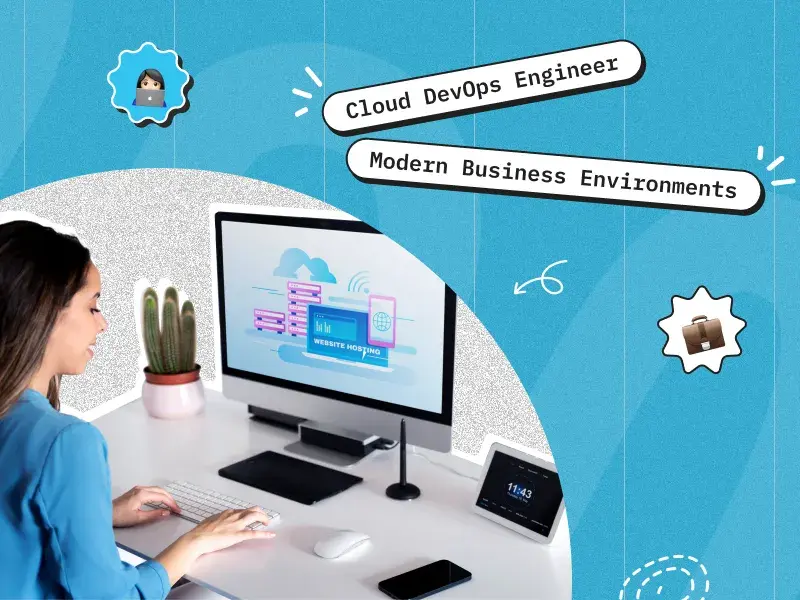Quick Summary:
Integrating DevOps practices into your business can significantly enhance software delivery and operational efficiency. This comprehensive guide outlines ten crucial steps for successful implementation, including setting clear objectives, fostering collaboration, and automating processes.
Introduction
Integrating DevOps practices into your business involves a series of strategic steps aimed at fostering this collaboration, automating processes, and continuously improving software delivery.
DevOps for startups is a strategic approach that bridges the gap between development and operations teams, fostering a culture of collaboration and rapid iteration.
By adopting DevOps practices, organizations can achieve numerous benefits, including increased speed to market, improved quality, reduced costs, and heightened customer satisfaction.
10 Steps to Integrate DevOps Practices
1. Define DevOps Objectives and Goals
Defining clear objectives and goals is fundamental to the success of your DevOps implementation. These objectives should be specific, measurable, achievable, relevant, and time-bound (SMART). They should focus on improving software delivery speed, enhancing quality through automation, and increasing operational efficiency. Establishing Key Performance Indicators (KPIs) helps in monitoring progress and identifying areas for improvement, ensuring that DevOps efforts are aligned with broader organizational goals.
2. Establish a DevOps Team Structure
Creating an effective DevOps team structure involves assembling cross-functional teams comprising developers, operations engineers, DevOps engineer, and quality assurance professionals. Each team member should have clearly defined roles and responsibilities aligned with the DevOps goals. The structure should promote accountability, transparency, and collaboration, fostering a culture where team members work together towards common objectives and share ownership of outcomes.
Understanding the distinctions between roles is crucial. For example, recognizing the differences between a DevOps Engineer vs. Software Engineer can help you better allocate responsibilities and leverage the unique skills each role brings to the team.
3. Foster a Collaborative Culture
Building a culture of collaboration is crucial for DevOp’s success. Encourage open communication, trust, and shared responsibility for outcomes among all team members. Implement practices like pair programming, shared code ownership, and regular cross-functional team meetings to break down silos and promote a unified approach to problem-solving.
4. Implement Continuous Integration/Continuous Delivery (CI/CD)
CI/CD pipelines are fundamental to DevOps, automating the build, test, and deployment processes to ensure faster and more reliable software delivery. Implementing CI/CD practices helps in reducing manual errors, increasing deployment speed, and ensuring consistent quality. Tools like Jenkins, GitLab CI, or CircleCI can be integrated to manage these pipelines effectively.
5. Implement Containerization
Containerization, particularly using technologies like Docker, involves packaging applications and their dependencies into standardized units (containers) that can run consistently across different computing environments. Implementing containerization simplifies deployment and management tasks, enhances scalability, and improves the reliability of applications. Integration with container orchestration platforms such as Kubernetes further enhances automation, resource utilization, and operational efficiency.
6. Integrate Infrastructure with CI/CD Tools
Integrating infrastructure automation tools (e.g., Terraform, Ansible) with CI/CD pipelines (e.g., Jenkins, GitLab CI) is crucial for automating the provisioning, configuration, and deployment of infrastructure and applications. This integration streamlines the release process, ensures consistency across environments, and reduces the likelihood of configuration drift or human errors. Automated testing, security scans, and compliance checks can be embedded into the CI/CD pipeline to maintain quality and security standards throughout the software delivery lifecycle.
7. Automate Testing and Quality Assurance
Automation of testing processes, including unit tests, integration tests, and acceptance tests, accelerates feedback loops and enhances software quality. DevOps encourages close collaboration between development and QA teams to integrate testing early and continuously throughout the development cycle. Automated testing tools and frameworks help in identifying bugs and performance issues early, allowing teams to address them proactively and ensure the stability and reliability of applications.
8. Monitor Application Performance
Monitoring infrastructure health and application performance is essential for identifying issues, optimizing resource usage, and ensuring a positive user experience. Implementing robust monitoring and logging solutions provides real-time visibility into application behavior, system metrics, and user interactions. Alerts and dashboards help in detecting performance bottlenecks, security incidents, and other operational issues promptly, enabling teams to take proactive measures and optimize system performance.
9. Continuously Improve and Iterate
DevOps promotes a culture of continuous improvement and learning, where teams regularly reflect on their processes, tools, and outcomes. Conducting retrospectives and post-mortems allows teams to identify strengths, weaknesses, and opportunities for improvement. Iterative refinement of practices, automation workflows, and tool integrations based on feedback and performance metrics ensures that DevOps engineer initiatives evolve to meet changing business needs and technological advancements.
It’s important to ensure your team possesses the skills for a successful DevOps engineer, which include proficiency in automation, collaboration, and continuous improvement.
10. Measure Success
Measuring the success of DevOps engineer initiatives involves tracking KPIs, analyzing metrics, and gathering feedback from stakeholders. Key metrics may include deployment frequency, lead time for changes, mean time to recover (MTTR), and customer satisfaction scores. Analyzing these metrics helps in assessing the impact of DevOps on business outcomes, identifying areas for optimization, and making data-driven decisions to drive continuous improvement and innovation within the organization.
Conclusion
Successfully integrating DevOps practices in your business demands a dedicated approach, transparent communication, and continuous performance evaluation. By following these structured steps, you can foster a DevOps culture that accelerates software delivery, improves quality, and aligns processes toward a unified customer focus.
If you’re looking to hire DevOps engineers to augment your existing team or build a new one from scratch, consider a company like Creole Studios. They have a proven track record of helping businesses achieve their DevOps goals.











 30 mins free Consulting
30 mins free Consulting 
 4 min read
4 min read 






 Love we get from the world
Love we get from the world 